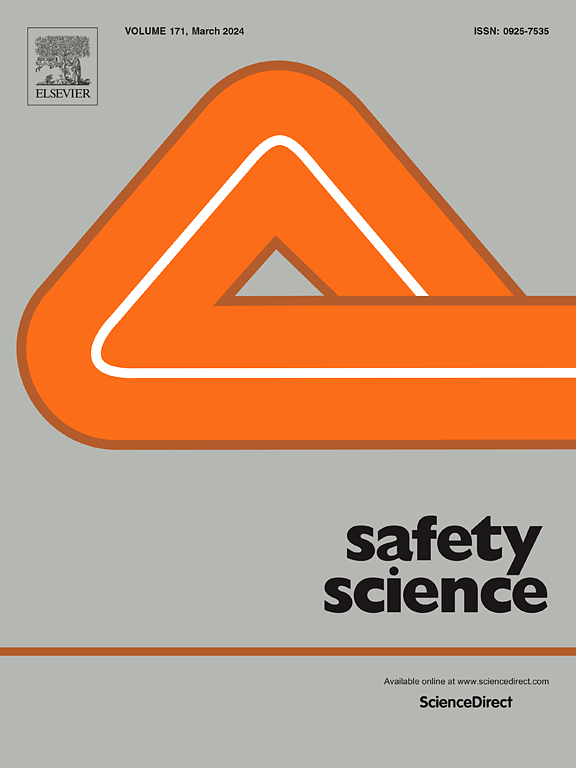不断变化的采矿环境中的职业健康和安全绩效:确定关键因素
IF 4.7
1区 工程技术
Q1 ENGINEERING, INDUSTRIAL
引用次数: 0
摘要
尽管采矿业在推动经济增长方面发挥着关键作用,但由于工伤率高,它也是众所周知的最危险的工作环境之一。矿业公司面临着应用职业健康和安全(OHS)措施的挑战,一方面要提高工人的安全、健康和整体福利,另一方面要提高生产率、提高产品和/或服务质量、培养工作动机、提高员工满意度,最后提高个人和社会的生活质量。文献中存在一个明显的研究空白,即同时解决多个安全健康因素及其对员工安全满意度和绩效的综合影响。因此,本文试图通过全面分析工作设备和环境因素、与职业健康安全相关的人类行为因素和组织气候因素如何影响操作员的安全满意度,以及这些因素如何反过来影响职业健康和安全举措带来的整体绩效,来解决现有文献中的空白。在建立了测量和结构模型后,根据从采矿机械操作员收集的数据,使用了充分的统计检验进行评价和假设检验。本研究的结果揭示了矿机操作员对被检查安全因素的意见与员工安全满意度之间的关系,其中组织气候因素和安全满意度对安全绩效表现出积极的影响,从而导致其改善。本研究的理论意义在于建立一个综合工作设备与环境因素、人的行为、组织气候等安全因素对矿山机械操作人员安全满意度影响的综合理论框架。本研究的实际意义有助于确定对矿山机械操作员满意度和安全绩效影响最大的关键安全因素(组织支持、同事支持、主管支持、工人敬业度、职业健康安全相关培训和管理层承诺)。这些发现为矿业公司的决策者提供了路线图,有助于确定提高工人满意度和安全绩效的优先领域。本文章由计算机程序翻译,如有差异,请以英文原文为准。
Occupational health and safety performance in a changing mining environment: Identification of critical factors
Although the mining industry plays a pivotal role in driving economic growth, it is also known for being one of the most dangerous work environments due to the high rates of injuries. Companies in the mining industry are faced with the challenge of applying occupational health and safety (OHS) measures in a manner to advance worker safety, health, and overall welfare, but also to improve productivity, enhance product and/or service quality, foster work motivation, and elevate employee satisfaction, and finally to enhance the quality of life for individuals and society. There is a noticeable research gap in the literature that simultaneously addresses multiple safety and health factors and their combined influence on employee safety satisfaction and performance. Hence, this paper seeks to address the gap in the existing literature by conducting a comprehensive analysis of how work equipment and environmental factors, human behaviour factors related to OHSs, and organizational climate factors influence operators’ safety satisfaction and how these, in turn, affects overall performance stemming from occupational health and safety initiatives. After developing a measurement and structural model, based on the data collected from the mining machinery operators, adequate statistical tests were used for evaluation and the hypotheses testing. The results of this study provide insight into the relationship between mining machine operators’ opinions on examined safety factors and employees’ safety satisfaction, where the organizational climate factors and safety satisfaction demonstrated a positive impact on safety performance, consequently resulting in their improvement. The theoretical implications of this study lie in establishing a comprehensive theoretical framework integrating safety factors, such as work equipment and environmental factors, human behaviour, and organizational climate, and their influence on the safety satisfaction of mining machinery operators. The practical implication of this research contributes to determining the critical safety factors (organizational support, co-worker support, supervisor support, worker engagement, the training related to OHS, and management commitment) that exert the most significant impact on the satisfaction of mining machinery operators and safety performance. These findings serve as a roadmap for decision-makers within mining companies, facilitating the identification of priority areas for enhancing both worker satisfaction and safety performance.
求助全文
通过发布文献求助,成功后即可免费获取论文全文。
去求助
来源期刊

Safety Science
管理科学-工程:工业
CiteScore
13.00
自引率
9.80%
发文量
335
审稿时长
53 days
期刊介绍:
Safety Science is multidisciplinary. Its contributors and its audience range from social scientists to engineers. The journal covers the physics and engineering of safety; its social, policy and organizational aspects; the assessment, management and communication of risks; the effectiveness of control and management techniques for safety; standardization, legislation, inspection, insurance, costing aspects, human behavior and safety and the like. Papers addressing the interfaces between technology, people and organizations are especially welcome.
 求助内容:
求助内容: 应助结果提醒方式:
应助结果提醒方式:


